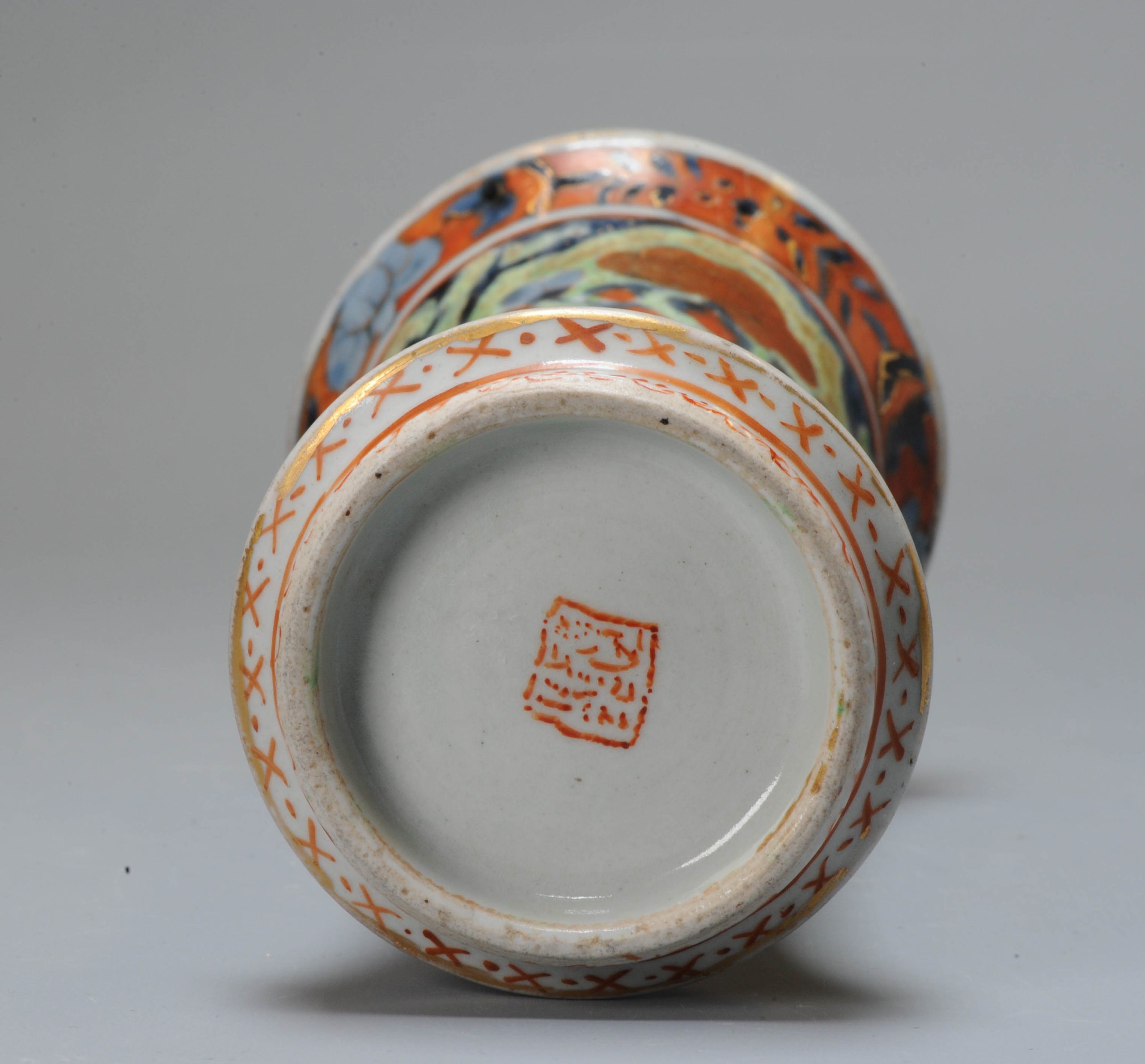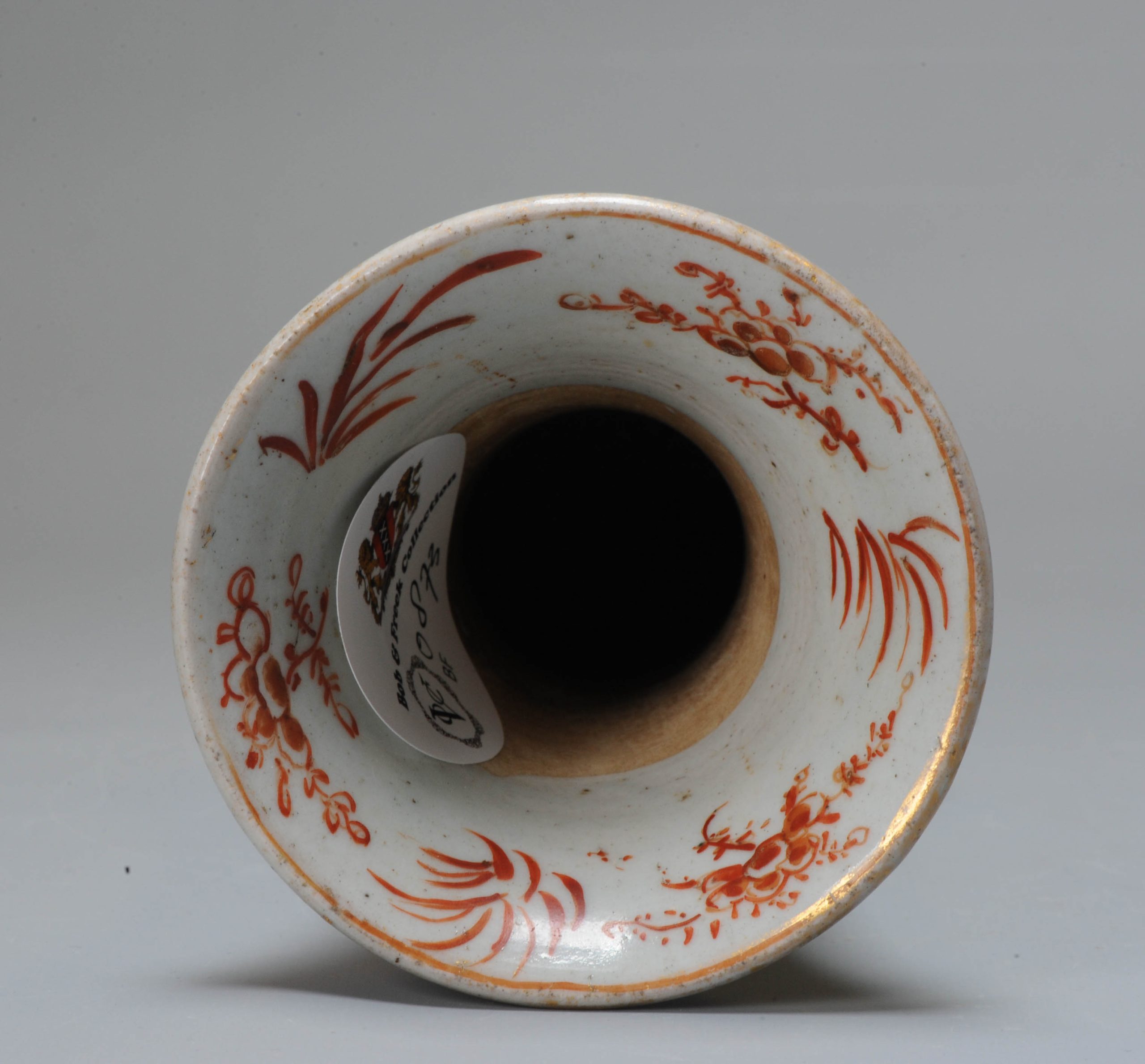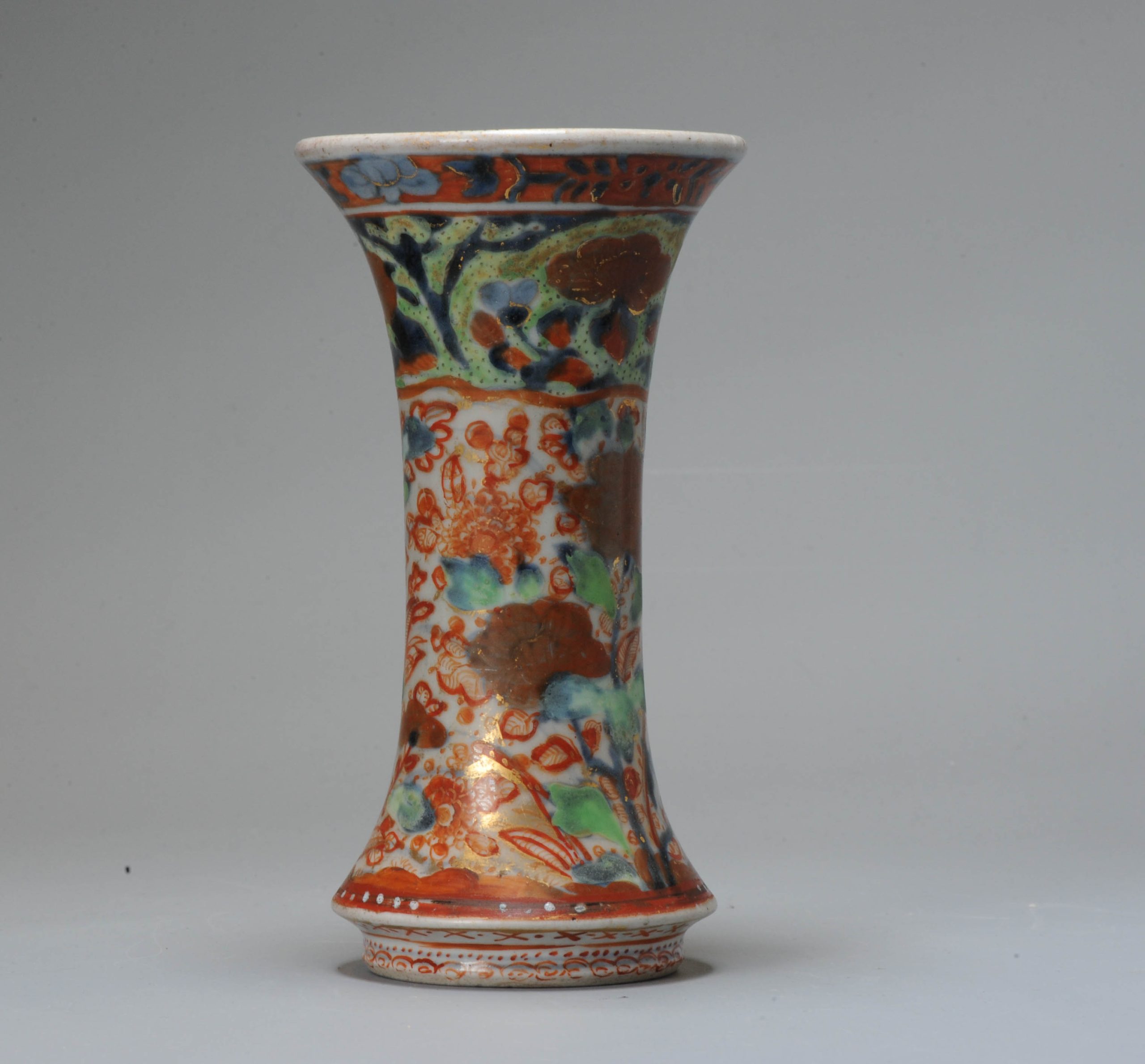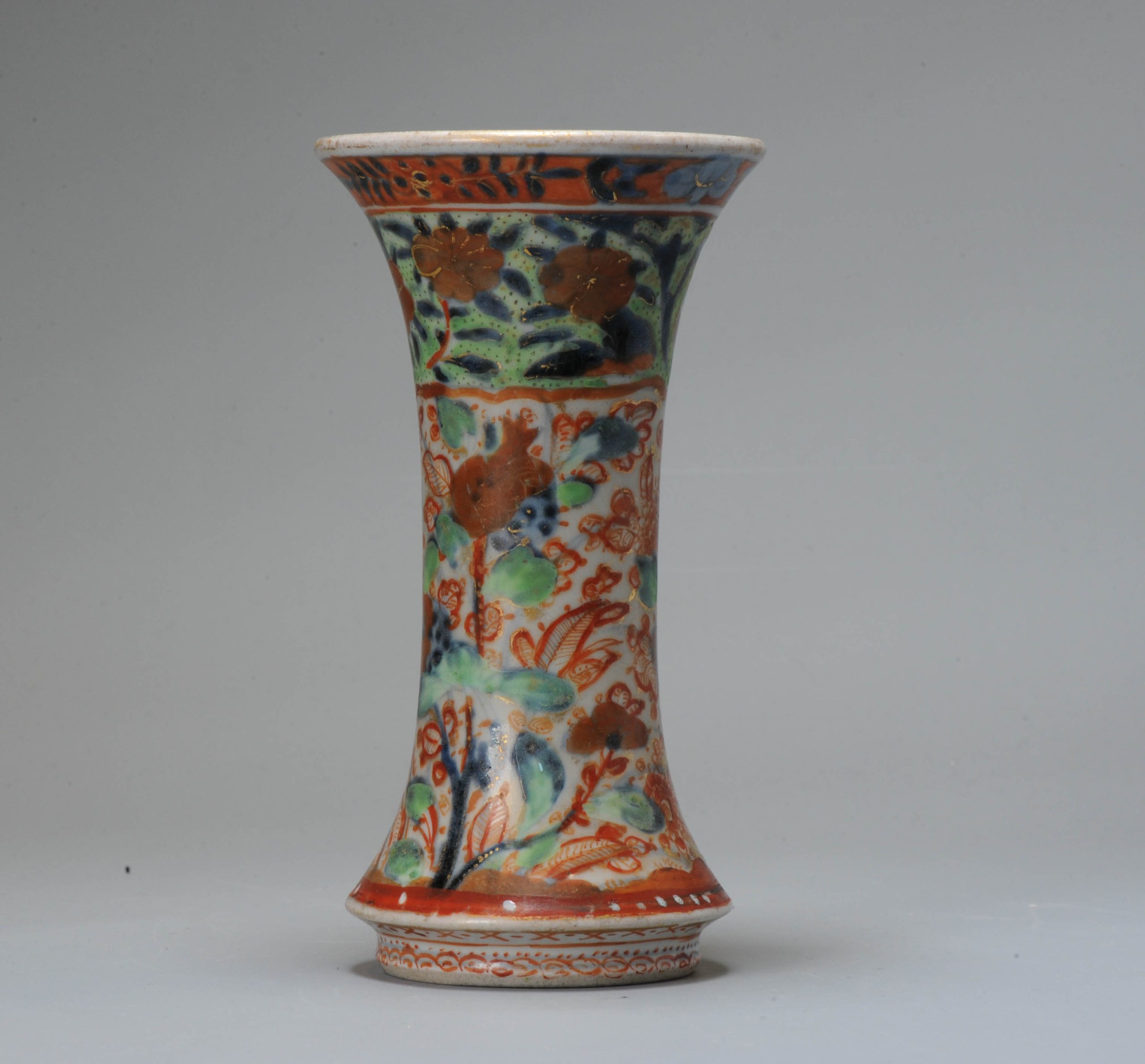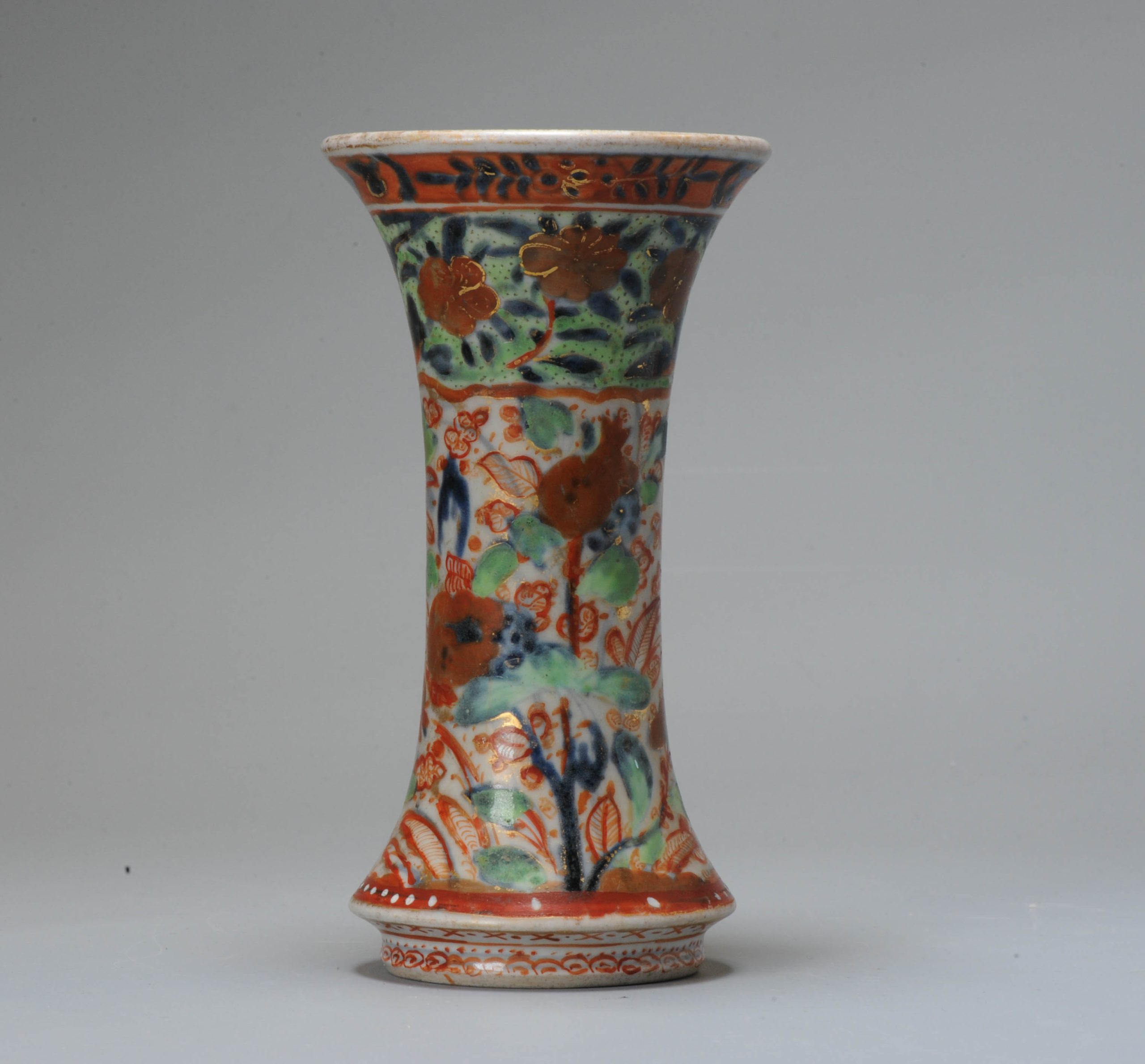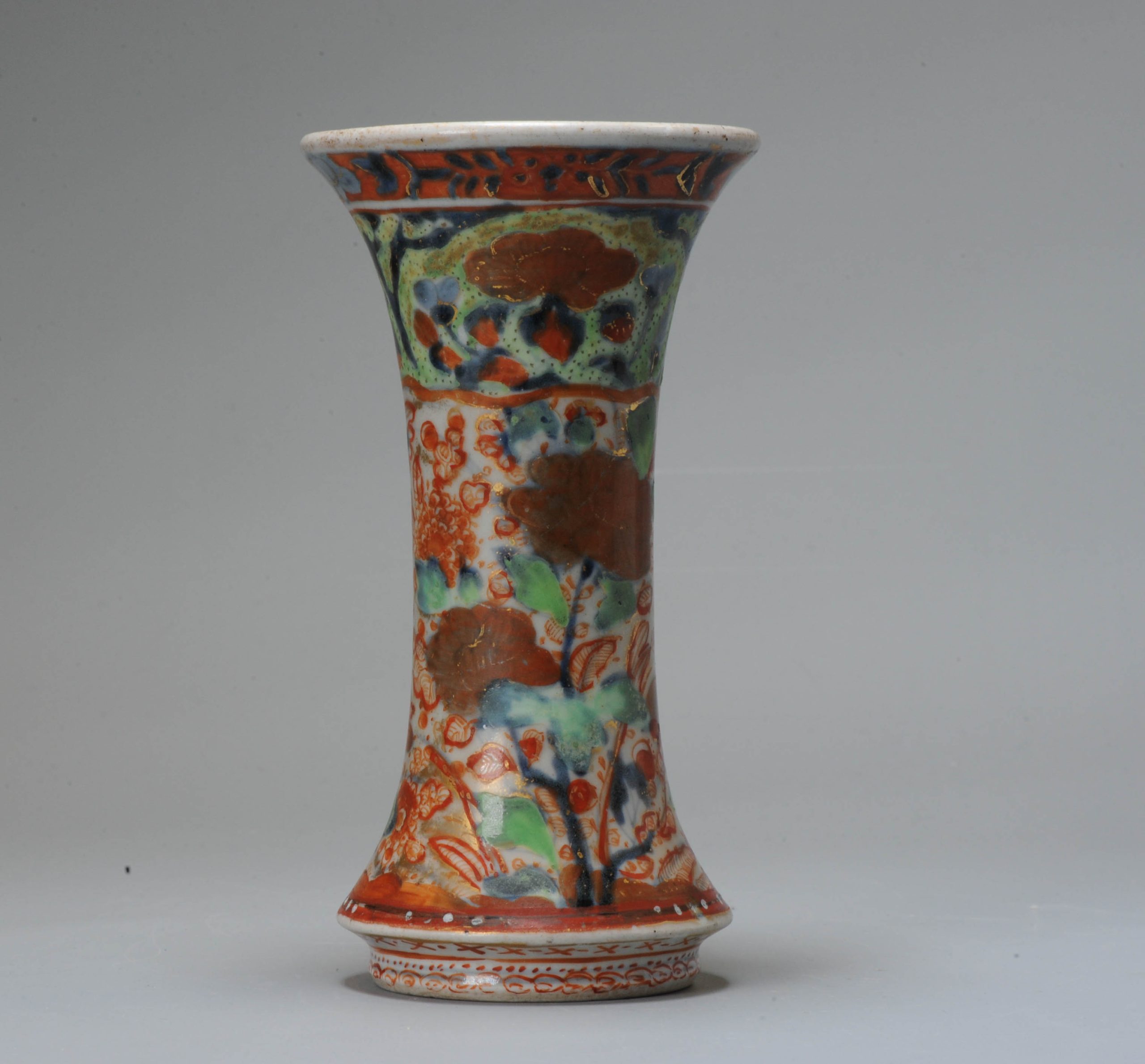0873 A 18th c Japanese clobbered in the Europe. Very interesting
Description:
0873 Beaker vase Japan
1700-1720, Over-decorated in the West probably England, clobbered, c.1780-1830
Height 170 mm (6.69 inch), diameter of mouth 92 mm (3.62 inch), diameter of waist 78 mm (3.07 inch), diameter of footring 58 mm (2.28 inch), weight 409 grams (14.43 ounce (oz.))
Beaker vase of waisted cylindrical shape with a flaring rim and a spreading lower part tapering to a takefushi-shaped foot on a footring. Decorated in underglaze blue with two groups of flowering plants, round the rim a border with flower heads on an underglaze blue ground. Over-decorated in green enamel, iron-red and gold in the West probably England, clobbered, c.1780-1830 with flowering plants, leaves and scrolls. Round the foot an asterisks and dots and a silkworm-pattern border. Marked on the base with an over-decorator’s mark in iron-red in the form of a square filled with a pseudo-Chinese character.
According to Espir this beaker vase belongs to a group of Japanese porcelain over-decorated with what is thought to be English decoration dating from c.1780 until about 1830. It is generally garish and so overwhelming that it gave rise to the term ‘clobbered’ and the poor reputation from which all over-decorated Chinese and Japanese porcelain have suffered since the late 19th century. Much of the Chinese and Japanese porcelain over-decorated in this way was blue and white dating back to the flood of imports from the first half of the eighteenth century which by then was one hundred years old second hand and so unfashionable as to be unsaleable. On the base of many pieces over-decorated in this way is a decorator’s mark in iron-red in the form of a square filled with a pseudo-Chinese character. (Espir 2005, pp.239-240)
The demand for Japanese porcelain was strong but production was restricted so here was a gap in the market that the enameller could fill most profitably by giving Chinese porcelain a Japanese look. The simplest way of transferring Chinese porcelain into ‘Japanese’ was to enhance Chinese blue and white porcelain with iron-red and gold to create the appearance of Imari. For European decorated oriental porcelain mostly Chinese export porcelain objects were used. Only a small proportion were Japanese. (Espir 2005, p.74)
This beaker vase was once part of a garniture which mostly consisted of three covered oviform-shaped jars and two cylindrical beaker vases with spreading mouths, all with the same decoration, They were very popular in The Netherlands and elsewhere in Europe, where they were used as decorative items in the interior. (Jörg 2003/1, p.259)
Condition: Perfect.
References:
Additional Information
| Type | |
|---|---|
| Region of origin | Japan |
| Decoration type colour | Amsterdam Bont |
| Century | 18th century |
| Size | 17cm-19cm |

